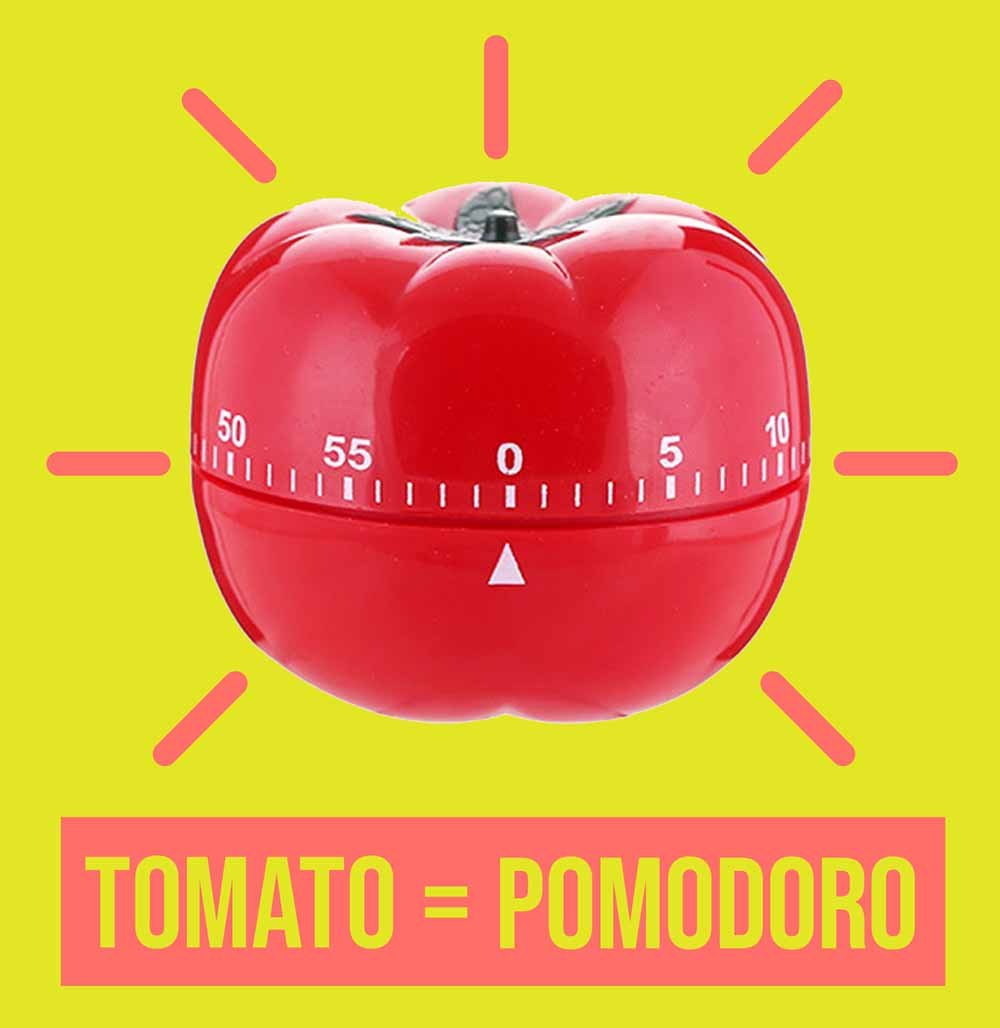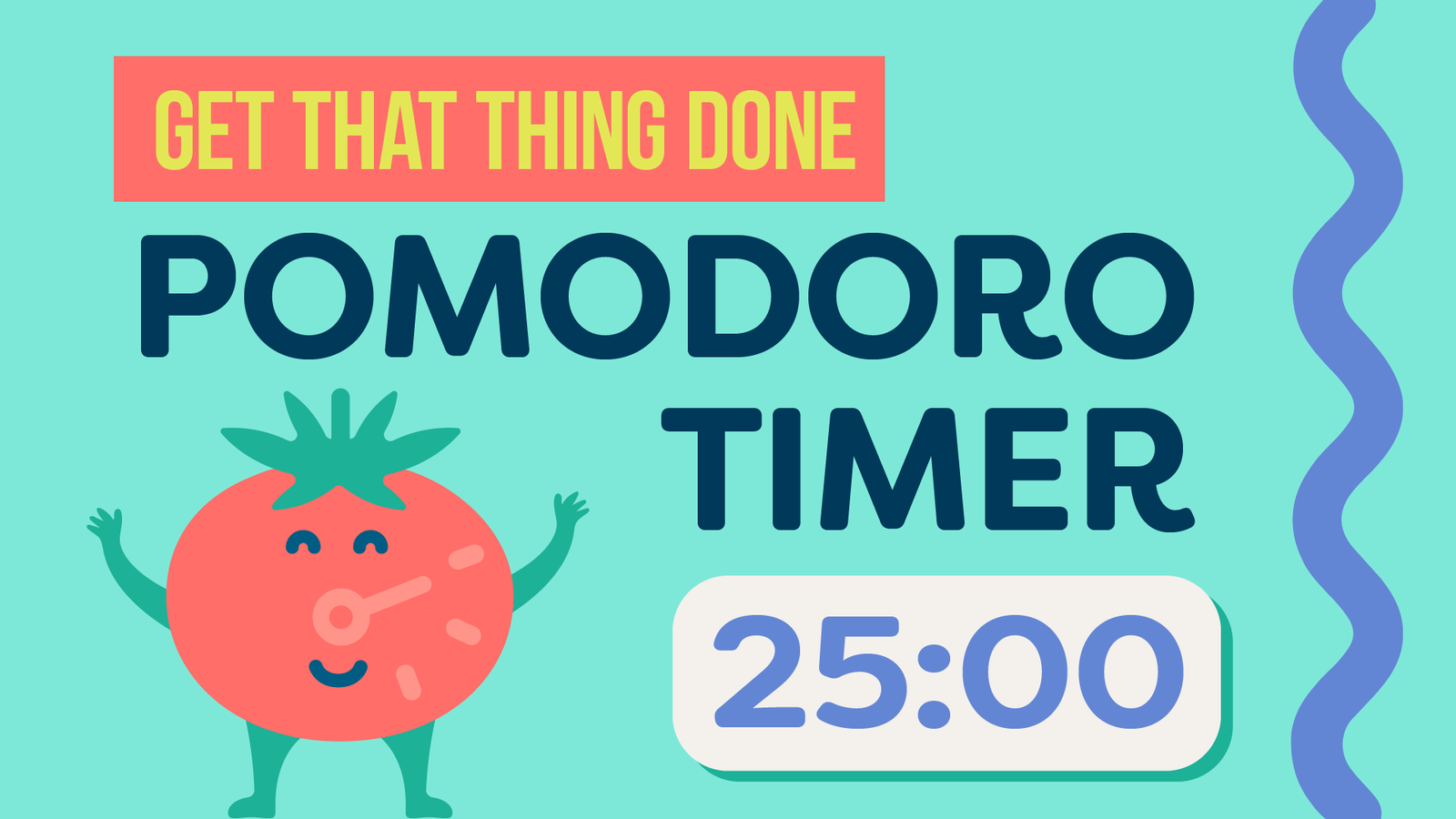Table of Contents
Ever put in full day’s work but have nothing to show for it?
Here’s how it usually goes for me… I crack open my laptop with big dreams of making progress on a project. I work for a good solid 10 minutes, but then I get a strong urge to check my email. *(All 5 of them.)*
OK now back to work … **PING** a new Slack message. Better see who it’s from. *Hmm*, I wonder if anyone commented on my IG story?? *DING* looks like my parents ordered eggs Benedict for breakfast. Oh, they also got hash browns. Mmmm hash browns.
I wonder if I should check email. Again.
Before I know it, the day’s over and my project is 1% more done. Distraction and procrastination win the day. Again.
Why it’s hard to focus.
We’ve got more distractions popping up from everywhere and our monkey minds can’t focus as long as they used to decades ago. We’re constantly switching from task to menial task and procrastinating on the work that actually matters.
If only there was a way to focus and get stuff done…
There is! Tons of them, in fact.
And one of my favs is the Pomodoro Technique.
What is the Pomodoro Technique?

The Pomodoro Technique is a simple way to trick your brain into focusing.
It was invented in the late 1980’s by an Italian college kid named Francesco Cirillo, who found himself hopelessly sidetracked by all the sweet music videos on MTV.
Worried he was going to flunk out and desperate for a solution, Francesco got a spark of inspiration: what if, rather than trying to deal with demanding tasks all at one time, he chopped them into bite-sized chunks? So, he grabbed a tomato-shaped timer from his kitchen to give it a try.
He set it to 10 minutes. He vowed to stay on task for all 10, then he would take a short break. He uttered a small prayer to the Lord above. And then he began.
Ding!
Much to his delight, he had been laser-focused for 10 minutes and had made *actual* progress.
He reset the tomato timer and did it again. Ding!
And again. Ding!
Soon enough, Francesco was zipping along like the Rome-to-Milan express. Ding! Ding! Ding!
Before he knew it, his task was completely done. Eureka!
He was so thrilled and relieved that he kissed the tomato-shaped timer. But he also realized he was onto something awesome that needed to be shared with the world. So, he did what any of us would have done in his situation: he gave it a baller name.
The Pomodoro Technique.
How do you do it?
The actual method is pretty easy which makes it easy to succeed!
- First pick 1 task
- Set your timer of choice for 25 minutes
- Work on the 1 task.
- When the alarm goes off, stop working and take a 5 minute break.
- Repeat the above process 3 times.
- On the 4th go-round take a longer break (15-20 minutes)
Yep pretty much a no brainer… you just set it and forget it! No overthinking allowed.
Who is the Pomodoro Technique for?
Procrastinators, distracted ADHD brains, and people who have a hard time focusing and working consistently. So basically everyone on the planet these days.
Why does it work?
When it comes to completing a hard task, the simple act of starting is usually the hardest part. One of the reasons the Pomodoro method is so effective is it combats our natural avoidance of difficult things at the brain level.
In his book Effortless, Greg McKeown references the Cognitive Easy Principle. Which says our brains are hard-wired to resist what it perceives as hard and welcome what it sees as easy.
He suggests we can overcome this principle by flipping our mental script. Instead of thinking “how can I finish this hard thing,” think instead “How EASY can I make this worthwhile thing?”
A great to trick your brain into believing something is easy is to break down big intimidating tasks into smaller bite-size chunks.
So instead of getting overwhelmed finishing your entire novel, rest easy that you only have to work on your rough draft for 25-minutes.
It’s like hitting the easy button — your brain won’t resist!
Break it down to sitcom chunks
Apparently I’ve been using this technique my whole life. When I was little I divided time into sitcom length. We used to watch a show called Silver Spoons (never heard of it? Trust me, it’s quality 80’s magic) and on long car trips we’d ask my parents “how many Silver Spoons will it take to get there?”. To a kid an hour and half drive feels like an eternity… but when it’s only gonna take 3 Silver Spoons to get to Grandma’s, our little brains were a-ok with that.
How to best Pomodoro?
Here’s a few simple rules if you want to get the best results when trying a Pomodoro timer.
I love rule following.
- Once you start the timer it has to go off. No pausing. No cheating. If you get pinged by an alert wait until your break to check it. (Try silencing all alerts before you start.)
- Don’t break, even for the bathroom or grabbing a drink from the fridge.
- If you absolutely have to stop just cancel the session and try again later. I suspect this is to keep the Pomodoro session sacred and effective. Consider it a holy time. The one I created uses a church organ as the official call to work.

- Keep tasks simple. Don’t make your task “file your taxes”. Simplify it to spend 25 minutes gathering receipts.
- Try grouping small quick tasks together. ie. Checking off multiple to do’s. Making appointments.
- Keep a running tab on how many tomatoes it takes to finish a project. We tend to underestimate the time it takes to finish things. After you’ve timed a recurring task a few times you can use the data to set better expectations! And even plan your next day in tomatoes.
- It’s ok to experiment with the length of your work time. Some tasks like creative writing or making art might take a more to get into it and once you’re in the flow you might not want to be stopped so soon! Just remember to take longer breaks.
Other popular Pomodoro timings to try
- 45 min focus / 15 min break
- 52 min focus / 17 min break
- 90 min focus / 20-30 min break
The best way to decide what works best for your brain is to experiment until you discover your magic timing. Then mix up your own tomato soup of productivity.
How I use it.
I used the Pomodoro method writing this article. I estimated the time into tomato increments and used it to track my progress. It was a fun way to gamify a task that I normally would procrastinate on and seeing the fast progress was reward enough to keep going.
I plan to use all this saucy data to better predict and estimate my freelance projects. AND to make consistent progress on my personal goals. I also suspect if I limit some stages of a project I’ll have less room to fall into perfection mode. Take this article… I definitely wanted to research more. But my tomato time was up so I moved onto the next task!
I made my own Pomodoro Timer!
OK maybe it was an elaborate form of procrastination, but none of the ones out there were sparking the proper amount of joy so I dusted off my After Effects and made a Pomodoro Timer worthy of my epic to do list.
My timer starts with a cute little tomato who guides you through a few deep breaths before you start your task. Then during the work time I added white noise and light jungle sounds to block out distractions. Plus there’s some sweet smooth jazz tunes for break time.




